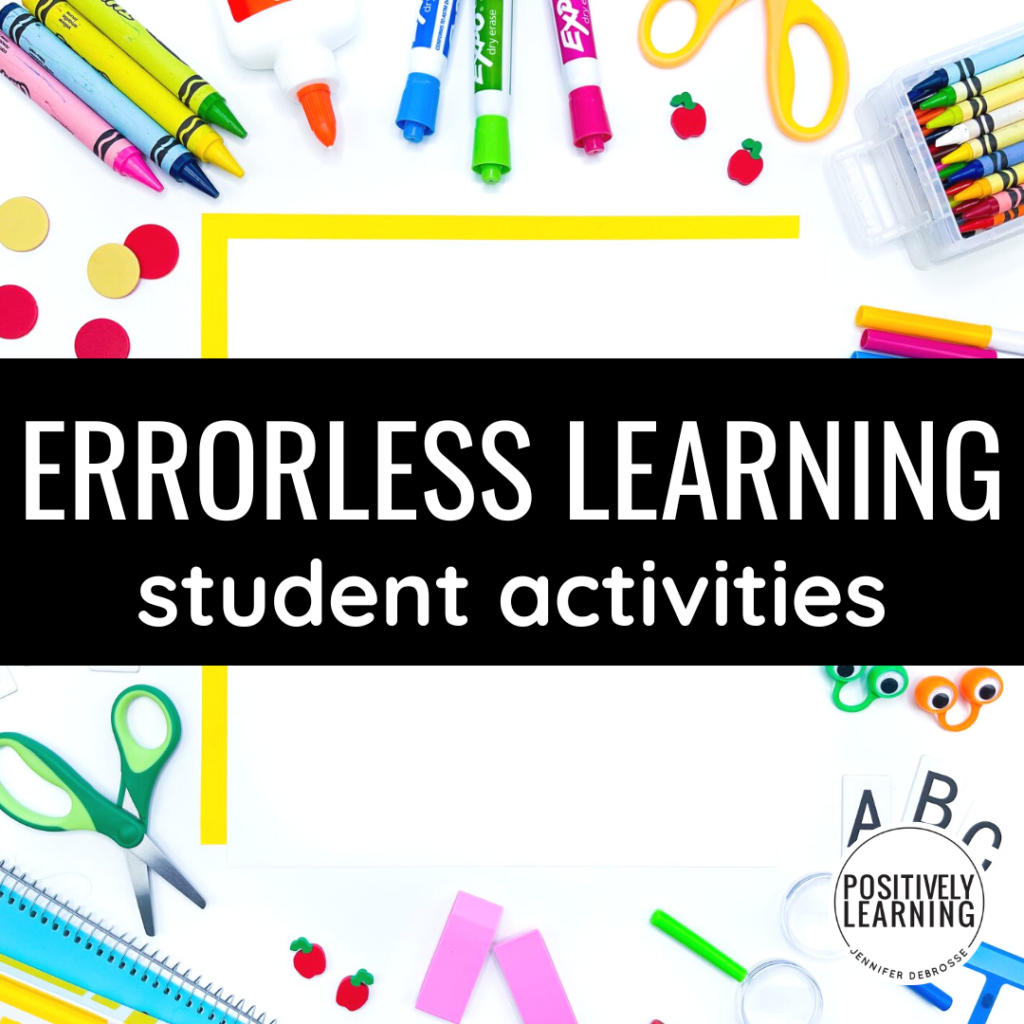
Is errorless learning right for your special education resource room?

Table of Contents
ToggleDo you ever feel like you're on a constant mission to find that perfect, magic teaching strategy? One that could help all our special education students and those with special needs to develop a wide variety of skills at their own pace? If that sounds like a dream come true, this instructional approach may be just the answer you've been looking for: errorless learning tasks!
Errorless learning is a teaching strategy that focuses on minimizing errors during the learning process. Instead of presenting a student with a problem and expecting them to find the correct answer, errorless learning involves presenting the student with the correct answer and then reinforcing that answer repeatedly. Essentially, errorless learning makes learning easier and less frustrating for students. This method is especially useful for students with disabilities who may struggle with traditional learning methods
In an errorless learning task, the student is presented with a series of tasks, each with a predetermined correct response (aka: every answer choice is correct). The student's task is to select the correct response, which has been made easy and clear with visual cues. For example, if the student is working on matching colors, an errorless task box may include a set of color images (i.e.: all yellow) and directions to identify a yellow item. There is no wrong answer presented. As the student completes each task correctly, they receive reinforcement in the form of immediate positive feedback (praise, tokens, or rewards). The goal is to gradually increase the level of difficulty while maintaining a high level of success to build learning confidence and persistence.
Using errorless learning task boxes can be an ideal instructional strategy for students in the special education classroom setting for several reasons. Firstly, it provides students with a structured and controlled learning environment that minimizes any confusion and frustration. Secondly, it allows children to learn at their own pace and progress through the tasks at a rate that feels comfortable for them. Thirdly, it can help students with disabilities develop different types of skills in areas such as fine motor skills, daily life skills, social emotional learning, academic skills, and social interaction.
In other words, implementing errorless learning task in our special education classroom can create some real magic!
Maybe at this point in the blog post, you're thinking that using an errorless learning approach may be just right for students working in your small groups, independent work systems, or even your entire class. How do you get started? Here's a list of errorless activities using resources that special education teachers may already be using in the resource room setting:
There are even more specific examples of errorless tasks designed ot boost student confidence in Episode 24 of Special Educators Resource Room Podcast:
Ready to Increase Student Participation?
Errorless learning is a game-changer in teaching that empowers students in special education classrooms. It allows them to build essential skills without the discouragement often linked with frequent errors. It provides a structured learning environment where students can comfortably learn at their own speed, progressing effectively towards notable success.
And the best part? You can provide your students with these errorless learning opportunities with these low prep options:
Add these for your independent work stations, morning work, extra practice, and early finishers.
I can't wait to hear how your students thrive with the instructional strategy!

I’m Jennifer and I was a special educator in the elementary school setting over the past decade. I entered the classroom every day dedicated to making learning inclusive AND engaging.

This website uses cookies to ensure you get the best experience on our website. See full disclosure here.
This website uses cookies to ensure you get the best experience on our website.
See full disclosure here.